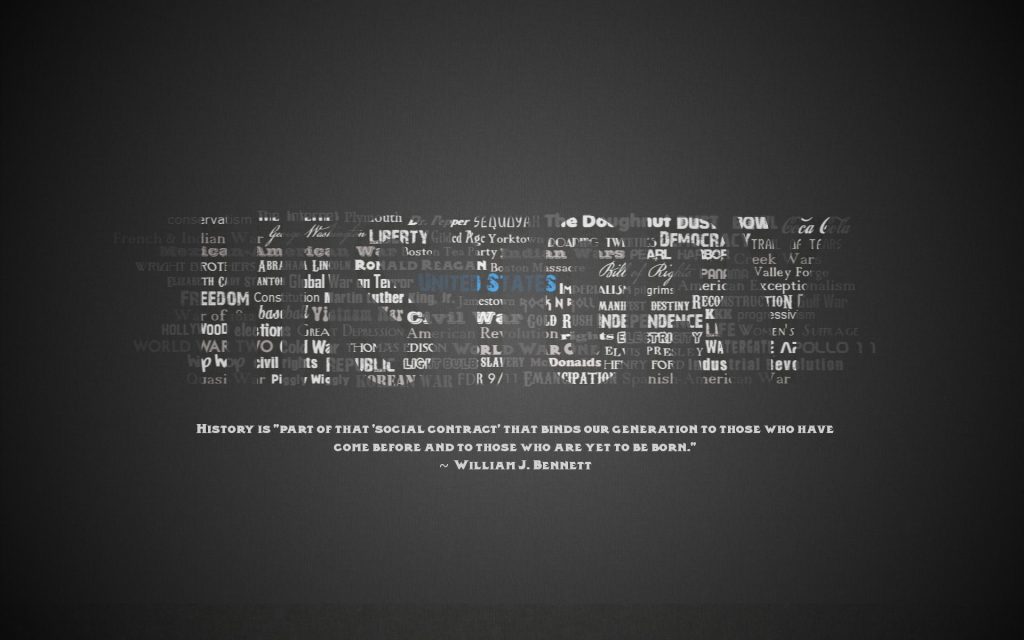Robotic Process Automation technology moves quickly. In just over a decade, this form of business process automation has gone from obscurity to the mainstream. Businesses worldwide use the tech to become more productive while saving money, with near-universal adoption just around the corner.
If you’ve ever thought to yourself, “how did we get here?” you’re in luck. This article will discuss the roots of RPA technology, explore how it’s shaping the modern business world, and look at what to expect from automation technologies in the future.
Welcome to RPA technology: a review of the past, present, and future.
When was the term Robotic
Process Automation first used?
The term, Robotic Process Automation, was first used in 2012. However, according to the research paper, Robot Process Automation (RPA) and Its Future (O. Doguc, 2020), the term didn’t really take off until around 2014 to 2015.
While the discipline was relatively small-scale at the time, it gained traction and attention when firms started announcing the savings and efficiencies they’d achieved through automation. By 2018, KPMG released the Rise of the Humans report. The paper suggested that banks and financial institutions could reduce costs in the sector by 75%. In the following years, adoption increased dramatically.
RPA technology in the past
The term automation was coined in 1946 by D.S. Harder, an engineering manager at the Ford Motor Company. As his car manufacturing plant began to use automatic devices and controls in its mechanized production lines, the concept was born. In our current content, automation refers to techniques that make systems operate automatically. These systems can be mechanical, electrical, or computerized.
However, while there may not have been a distinct word for it in the 1940s, automation has been part of human history for thousands of years. As early as the first century BC, Romans used water wheels to grind grain. By the 9th century, water and windmills were in full swing. By the time of the Industrial Revolution, steam engines powered new levels of efficiency.
The point is that humans have always been on the lookout for technology that we could harness to increase productivity. However, the roots of Robotic Process Automation technology strictly begin around the time of the first computer. Early computers were used to take the burden of math off humans and pass it on to machines.
In the paper, The Future Digital WorkForce: Robotic Process Automation (RPA) (S. Madakam, 2019), the author suggests that RPA’s roots stretch back to the ENIAC, a computer invented between 1943 and 1946. Interestingly, the completion date roughly matches D.S. Harder’s first use of the term automation. The author also suggests an earlier starting point for the technology, positing that “the abacus was the first computing machine.”
Early computers were unwieldy. They were complex to use and so huge that they needed to be housed in entire rooms. However, as computer hardware matured, it decreased in price. By the 1990s, personal computers could be found in homes across the developed world.
As computer technology moved along, businesses automated routine processes using scripting languages and macros. These tools were generally accessed within applications like Microsoft Word or Excel. While these uses seem primitive today, they represent an important early step towards software mechanization.
In the early 2000s, firms like BluePrism and UIPath paved the way for RPA by releasing platforms designed to automate back-office and administrative processes within organizations. These platforms, often called “bots” or “software robots,” were capable of mimicking human actions within computer systems. They could interact with multiple applications, perform data entry, extract information from documents, and execute various other tasks.
1. Roots of RPA technology
One of the early pathways of RPA came in the form of Business Process Outsourcing (BPO). Firms at the time would outsource manual work to various organizations. Completing these tasks relied on manual labor, often in far-flung countries.
Competition for this kind of business was fierce. However, rising employment costs left outsourcing companies looking for cheaper ways to perform these tasks. In addition, managing a workforce in different countries and time zones brings its own complexities. As such, many of these services were among the earliest adopters of RPA.
Screen scraping technology is another precursor to RPA. By some accounts, the practice dates back to Tim Berner-Lee’s early World Wide Web. However, other sources suggest the technology emerged in the 1960s or 1970s as a way to enable data exchanges between mainframe terminals with non-standardized interfaces.
Another crucial piece of the jigsaw was workflow automation software. The concept of workflow management can be traced back to the dawn of the Industrial Age, but in truth, it was the emergence of early workflow software in the 80s that produced technology that is a direct precursor to RPA. This software typically automated order processing and inventory management, freeing up manual workers to complete other tasks.
When taken together, these trends pointed towards an increased appetite for efficiency that made RPA technology a matter of when rather than if.
2. Ten Early RPA Use Cases
The earliest RPA use cases involve automating repetitive, rule-based tasks. The initial aims of RPA technology centered around streamlining operations and business processes. Some of these initial use cases provide a helpful benchmark for what the tech could do at the time.
Here are ten early use cases of RPA tech.
- Data entry, migration, extraction, and validation
- Data backup and archiving
- Automated form filling
- Payroll processing
- Account reconciliation
- Inventory management
- QA testing
- Healthcare billing
- Loans processing
As you can see, the applications of RPA technology were quite diverse. However, as businesses began to save time and money on these transactions, they began to explore the boundaries of RPA. Soon, we entered the present-day incarnation of RPA tools.
RPA technology in the present
The present-day story of RPA technology is one of near-uninterrupted success. In a short space of time, RPA has established itself as an indispensable tool that has ushered in a new era of productivity in the modern business era.
We’ve already explored the roots of RPA; now it’s time to look at what the technology is doing today to help businesses drive revenues and results.
RPA in the current day
To a large extent, the present-day capabilities of RPA owe a debt to Artificial Intelligence. While RPA on its own was able to drive greater efficiency and productivity, it ran up against hard limits when tasks required human cognition. However, the integration and convergence with AI tools resulted in an expansion of the scope of RPA projects.
One of the most significant limitations of RPA tech is its inability to deal with unstructured data. However, the use of Computer Vision Technology and Natural Language Processing (NLP) has demolished these previous restrictions. By adapting to emergent AI technologies, RPA has arguably become more relevant than ever.
1. Industry-focused RPA tools
There are few surer signs of a maturing market than when vendors begin to release industry-specific tools. In recent times, products have been introduced to the market that provide out-of-the-box automation solutions for healthcare, finance, HR, logistics, and more. These applications come with templates that make designing process automation far easier.
2. RPA and Cognitive Automation
The convergence of RPA and Cognitive Automation (also referred to as Intelligent Automation) has been a huge step forward in recent years. Fusing AI, ML, and RPA allows teams to supercharge their business process automation.
Now, both back-office and front-office operations can take great advantage of RPA tech, allowing their automated processes to handle all kinds of unstructured data and even make decisions that used to require human input.
3. RPA Centre of Excellence (CoE)
While the potential of RPA is obvious, maximizing efficiency is a concern for many businesses. Quite often, the bottlenecks are not happening on the technical end, but instead, they occur because companies lack the expertise to really press home the advantage. Organizations are setting up an RPA Centre of Excellence (CoE) to ensure they have the foresight and understanding of the tech to push through game-changing projects.
4. Cloud-based RPA
Cloud-based RPA tools present an excellent option for modern businesses. Remote access to these tools helps ensure that employees can work from any location with a secure, elastic, and scalable automation solution. However, perhaps more significantly, cloud connectivity allows businesses to take full advantage of ML and data analytics by providing mighty computational power to employees, regardless of their location.
5. No-code RPA
No-code or scriptless RPA has grown in popularity in recent years. UI/UX design is an essential element of adoption. Ensuring that everyone, and not just a small group of coders, can build automated processes helps democratize the tech, and leads to more creativity and faster collaborations.
6. Workflow orchestration
In the past, RPA was best used for predictable, rule-based tasks. However, limitations included problems scaling RPA solutions and a high level of both management and maintenance. Throw on top of this the increasing complexity of IT processes, and you have a problem screaming out for a solution. Enter workflow orchestration.
Workflow orchestration allows RPA processes to work more efficiently and in the correct order. For businesses that need to scale and grow, these advances are invaluable.
7. Mid-market and SME automation
RPA technology used to be out of reach of SMEs. However, like all technology, it has become cheaper and more accessible as the years go by. This development is essential for helping disruptive businesses thrive and even compete against the status quo.
8. Digital transformation
No conversation about the present-day use of RPA can be made without mentioning how the tech has enabled digital transformation across traditional pen-and-paper industries. Aside from the positive environmental impact, it has also allowed businesses to do more with less and reduce the burden on their manual workers.
Ten Present-day RPA use cases
Comparing present-day RPA use cases with their early equivalent is a good way to measure the progress this exciting technology has made in a few short years. Here are ten present-day RPA technology use cases.
- Automated drug discovery
- Maintenance scheduling for industrial infrastructure
- Price monitoring
- Inventory and order management
- Healthcare appointment scheduling
- Quality control in manufacturing
- Supply chain optimization
- Chatbots and personal assistants
- Regulatory compliance
- Fraud detection
These current-day use cases of RPA show precisely how the tech has moved from handling predictable if/then/else type tasks to something far more sophisticated. From the vantage point of the early 2000s, many of these functions would probably seem unlikely. However, thanks to AI tools, RPA became more elastic in what it could achieve.
However, this is just one step on the journey toward hyperautomation.
RPA technology in the future
It’s impossible to talk about the wide-scale adoption of RPA without discussing COVID-19. The pandemic took everyone by surprise, even firms with solid business continuity plans. In a business sense, the era will be partly remembered as a time of significant digital transformation.
RPA, alongside other tech-like communication tools, was at the forefront of this great change. By the summer of 2020, interest in RPA had reached its peak—at least according to Google search terms.
However, attempts to quantify interest in a solution based on search volume alone is a fool’s errand. Any exciting new technology will experience an explosion of significant interest, which will die down as management and employees gain an understanding of these new tools. The best way to judge the utility of software is to look at market share trends.
According to statistics, RPA spending has risen dramatically since 2020. What’s more, forecasts suggest that the market size will go from $1.23bn in 2020 to $13.39bn by 2030. Indeed, according to some analysts, these predictions might be somewhat conservative. Some research suggests that RPA will be a $66bn industry by 2032.
1. RPA Gartner Hype Cycle
Another good way to look at the future of RPA is through the prism of the Gartner Hype Cycle. This established methodology helps executives understand new technologies and see through the marketing bluster that can accompany new tech. It’s about evaluating whether promising new frontiers will turn into reality or become a solution in search of a problem.
The Gartner Hype Cycle consists of five stages that a new technology goes through. They are:
- Innovation Trigger: A new, exciting idea with limited products
- Peak of Inflated Expectations: The time when everyone is talking about the possibilities
- Trough of Disillusionment: The tech doesn’t quite meet outsized expectations
- Slope of Enlightenment: Solid products help people truly “get” the tech
- Plateau of Productivity: Widespread adoption
The Gartner hype cycle for RPA is in the final stage. Organizations have adopted the tech en masse, and its potential is both well-known and well-understood. However, while you might have the impression that reaching the final stage means that the upper bounds of the tech have been realized, you’d be wrong.
The future of RPA lies in its convergence with several other exciting technologies. To put it another way, the RPA Hype Cycle will continue.
2. RPA technology and hyperautomation
RPA is what is known as a Transaction Processing System (TPS). In short, that means a computer that handles day-to-day business transactions within an organization. RPA relies on well-defined and pre-written rules to carry out tasks.
These systems have had a massive effect on an organization’s bottom lines. They’ve helped increase productivity, accuracy, cost savings, and overall work quality. However, there are limits to what these tools can achieve. To a large extent, it’s because managing RPA workflows is a fairly considerable task. True automation requires an even greater hands-off approach.
If RPA tools are to continue to make an impact in the future, they need to integrate with other technologies on a path toward hyperautomation.
Cognitive Robotic Process Automation
RPA and cognitive automation products are already here. This marriage of technologies offers an elegant solution to the hard limits of RPA, namely, the technology’s inability to make decisions and deal with unstructured data. By using AI technologies, such as Machine Learning, Computer Vision, and Natural Language Processing, RPA bots can automate a more complex range of human tasks.
Expanding the scope of automatons will be Cognitive RPA’s biggest contribution. We’ve all marveled at how Generative AI has opened the doors to new horizons. However, it’s just one kind of AI. Robotic and Cognitive Automation, when paired together, will be the brains and the brawn of a new era of hyper-productivity.
Adaptive Learning
Adaptive learning is another element of a hyperautomation approach. By using a mix of AI tech, like ML and data analytics, RPA bots will collect and analyze information on the tasks they perform, and use these learnings to improve. This continuous learning will result in data-driven decisions and even self-healing bots.
However, the potential does not stop there. While self-healing bots will ensure greater uptime for RPA tools, self-improving bots will facilitate more productivity and a more personalized type of assistance. The bots of the future will mold themselves around their user, learning their workflows and offering them enhancements where needed.
Attended Automation
Research suggests that Unattended Automation makes up the lion’s share of RPA implementations. Unattended Automation is best suited for back-office tasks, while Attended Automation works more like a personal assistant that is triggered as and when a stakeholder requires help with predictable tasks.
The future of Attended Automation will involve a more seamless human-computer relationship. Instead of being triggered by a request, the automation system will be predictive and reactive. It will make suggestions based on context, allowing human workers to reach unprecedented levels of productivity.
Process mining
Process mining will play a significant role in the future of RPA. Hyperautomation is about mechanizing as many tasks as possible; process mining will allow teams to develop a more comprehensive understanding of their business processes.
By analyzing event logs, process mining tools can identify areas where time or money can be saved within an organization. Once again, ML and data analytics will play a part. Deep analysis of business processes will help organizations unearth processes that they didn’t previously think were possible to automate.
Increased user-friendliness
A large part of the success of RPA is its ability to democratize automation. Advances have been made in recent years, including the proliferation of no-code RPA tools. However, with advances in Generative AI and NLP, conversation will become the new interface.
The future will see process mining and self-learning RPA bots collaborate with stakeholders to enhance and augment their work, with humans dictating what they need and robots faithfully carrying out the task.
Further integration
Finally, RPA tools will move from standalone applications to cross-business applications that sit at the heart of the organization. Automation will be controlled by a centralized system that will tie together individual workers, systems, tools, and databases, creating a seamless experience.
3. Hyperautomation: the final stage
Hyperautomation RPA will involve a division of labor that will look something like this:
- AI will be trusted to make optimal decisions, often factoring in things that humans cannot perceive
- Data analytics will provide insights by finding patterns and relationships in data that are well beyond the scope of human understanding
- RPA will execute the transactions, supported by AI and analytics
However, it’s important to note that hyperautomation is as much a philosophy or, dare we say, an attitude. It’s about looking at business processes and automating everything possible.
4. Ten Future RPA Use Cases
The future of RPA shines bright. The possibilities are almost endless. However, here are ten future RPA use cases that are not far away.
- Health care monitoring and diagnosis
- Autonomous cars
- Predictive maintenance
- Legal research
- AI-driven decision making
- Environmental monitoring and conservation
- Education and training
- Energy grid management
- Retail and warehousing fulfillment
- Automated space discovery
Final thoughts
In a short space of time, RPA has made itself an integral part of the enterprise. Business process automation tools have moved from basic transactions to more complex tasks that once required human decision-making.
The future of tech is about the convergence of Robotic Process Automation and Artificial Intelligence. While there are some RPA artificial intelligence tools already on the market, they are just scratching the surface of what can be achieved.








